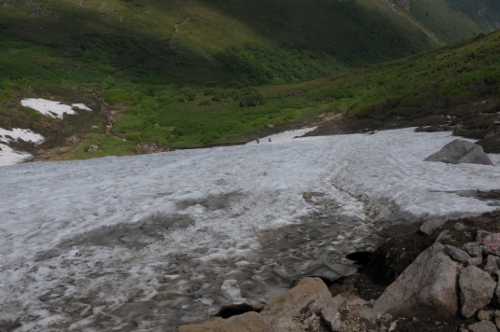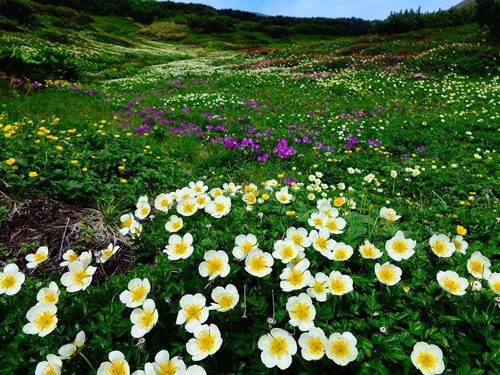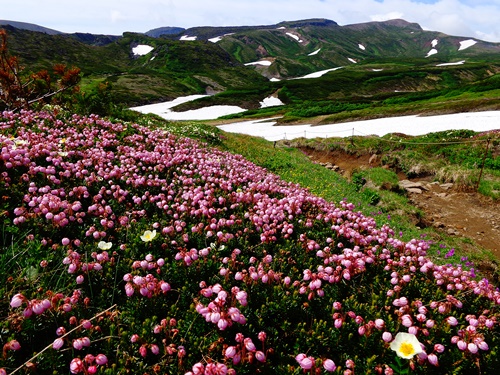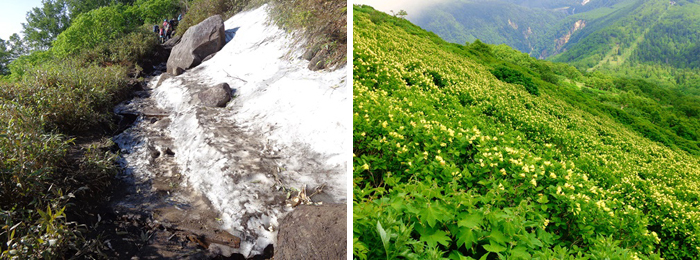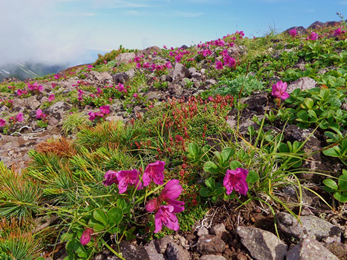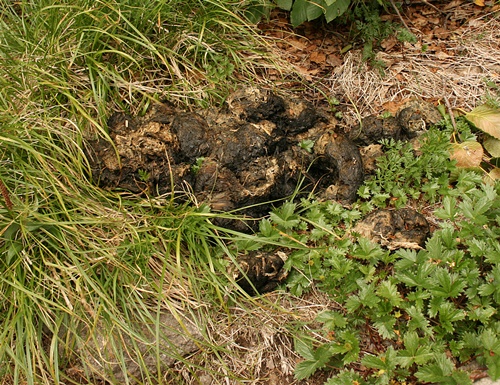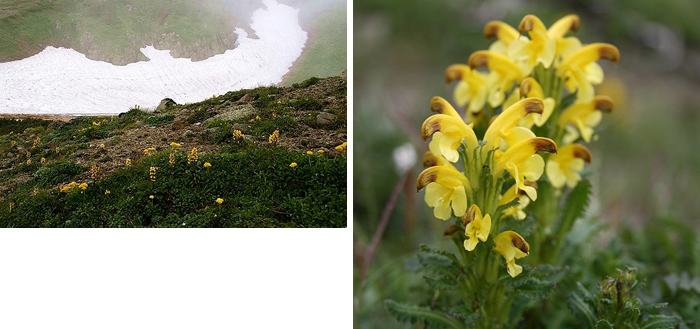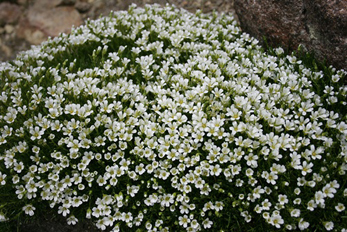On the Mt. Aka course, a snowy gorge of roughly 23 meters remains before the Daiichi Kaen sign.
However, the snow is melting nicely and the trail is expected to become exposed shortly, so the snow should present little problem in terms of passage. In Daini Kaen, the snow is melting up to before the sign; nonetheless, the area remains almost completely covered with snow. At Daisan Sekkei, a snowy gorge of approximately 140 meters remains from the middle to lower area. The snow becomes slightly hard during the daytime, so caution should be exercised, particularly when descending. At Daiyon Sekkei, a snowy gorge of about 50 meters remains in the lower area but should not present a major problem.
Photo: Daisan Sekkei, Mt. Aka Jul. 17
However, the snow is melting nicely and the trail is expected to become exposed shortly, so the snow should present little problem in terms of passage. In Daini Kaen, the snow is melting up to before the sign; nonetheless, the area remains almost completely covered with snow. At Daisan Sekkei, a snowy gorge of approximately 140 meters remains from the middle to lower area. The snow becomes slightly hard during the daytime, so caution should be exercised, particularly when descending. At Daiyon Sekkei, a snowy gorge of about 50 meters remains in the lower area but should not present a major problem.
Photo: Daisan Sekkei, Mt. Aka Jul. 17
